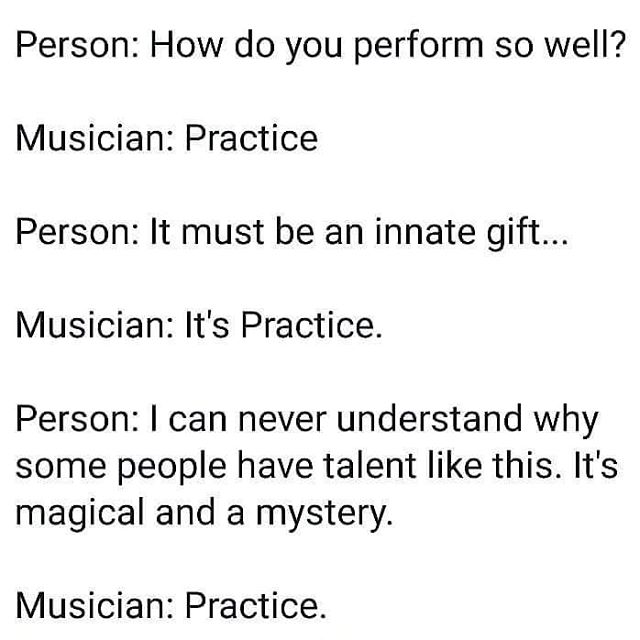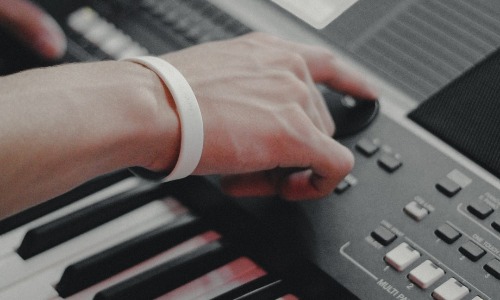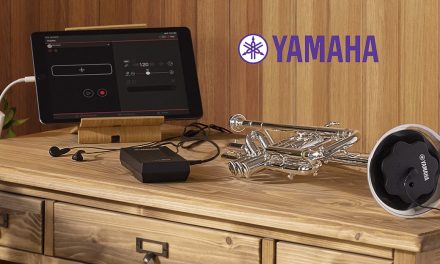
So you’ve told yourself you want to pick up that instrument you’ve always wanted to play, or one that you’ve neglected for too long. Re-invigorated by a New Year you start to play and… Oh! It’s not as easy as you thought.
Fear not! With a bit of hard work and some tips from us you’ll be a virtuoso in no time!*
*perhaps only 2-5 years
Although the following refers mostly to instrumental lessons, the whole thing also applies to learning how to sing.
Tip 1: Work with a Teacher
There are SO many advantages to this it’s hard to list them all, but the main ones, especially for beginners is that:
a – Getting started will be much, much easier.
For lots of instruments getting that basic technique right can mean the difference between actually making a note, or falling into bad/uncomfortable or damaging technique. With a bit of guidance from someone experienced you’ll be much more likely to pick up enough to play a few tunes, have something to show for your work, and be more motivated when you hit an obstacle.
b – You have someone else to work for.
Having a teacher gets you more invested in the process of learning an instrument. You become financially invested (especially if your teacher lets you book blocks of lessons in advance) and socially invested: you don’t want to turn up to the lesson without having done any practice, and it’s encouraging when your teacher wants you to advance and enjoy the instrument.
It’s worth getting at least a couple of tester lessons, as getting a teacher that you have a rapport with can really boost your learning.
Tip 2: Little and Often
The key to advancing in any discipline is practice. With musical instruments there is a certain amount of muscle memory that you can build on.
Set aside 10 minutes a day where you can consistently practice. Put it into your calendar and give yourself a reminder or set an alarm to remind yourself to start.
10 minutes a day doesn’t sound like too much, but it’s enough to refresh the knowledge of the last lesson, and with a bit of luck you’ll naturally play for a bit longer without noticing the time.
Tip 3: Remove Obstacles
Having your instrument, music stand, music set up ready to go can really encourage you to play it more often. If you can put it in a space you use often, you might see it several times a day, a nice reminder of your goal.
You can get lots of different types of instrument stands (or even wall hangers) that will help you display your instrument a bit more safely, and maybe even add to the decor.
If you’re nervous about being heard, many instruments have a mute available, to quieten down the sound to room-only levels. This can remove the obstacle of feeling like you’re annoying the household/neighbours.
Tip 4: Don’t worry about failure – just keep going
We all slip up. Unexpected life events get in the way of our best intentions. The worst thing you can do is think ‘I haven’t played in weeks, I’m just not cut out for this.’ A few weeks off will have such a small effect compared to getting back to playing for months or years to come.
If you’re finding it hard to play, make the action as easy as possible, even if it’s just a playing a scale in the morning. Turning up is the most important part, the rest is a bonus.
Tip 5: Get Social
One of my personal favourite ways to play music is in a group or duet. Playing together is another skill to master, but when you get it right, the results can feel fantastic.
There are so many opportunities for making music together. Find a friend to play duets with. Join a local amateur orchestra or choir. Sit in on a pub folk-night or ukulele group.
Being surrounded by people with similar interests, and similar enthusiasm can give you an extra boost. Joining a weekly/monthly meeting will be another way to make music-making a part of your lifestyle.
Tip 6: Have Fun!
Don’t feel like everything you play has to be ‘progressive.’ It’s good to try and stretch yourself, but it’s important to not get so frustrated with difficult pieces that you lose touch with the joy of playing music.
It’s good to take a break, so have a few easy, fun, satisfying pieces to go to when you need a bit of light relief.
—
Hopefully with these in mind you’ll have the right tools to take your instrumental playing to the next level, and beyond. Thanks for reading!






